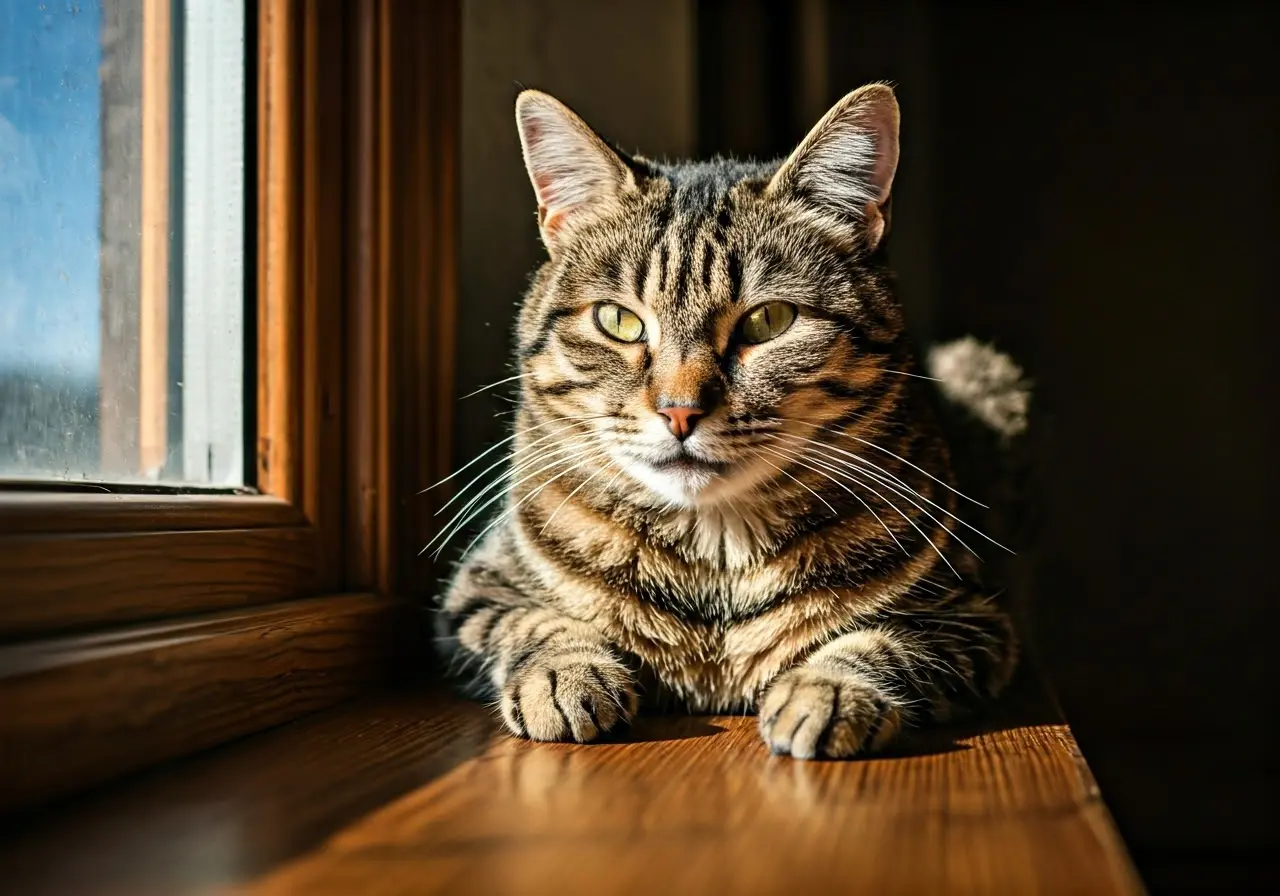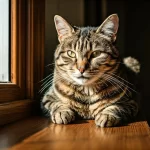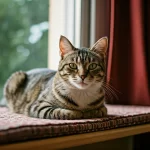Caring for a senior cat can be a rewarding experience, filled with unique challenges and heartwarming moments. As our feline friends age, their needs change, and it’s important to adapt our care routines to ensure their health and happiness. In this blog, we’ll explore essential tips to help you provide the best care for your senior cat at home.
Understanding the Aging Process in Cats
As cats age, they go through numerous physical and behavioral changes. Understanding these changes can help you anticipate their needs and adjust your care strategy accordingly. Typical signs of aging include reduced mobility, changes in sleeping patterns, and possible weight variations. Regularly observing these behavioral shifts allows pet owners to discern whether the changes are simply part of aging or indicative of underlying health issues. Recognizing behavioral changes is crucial for timely interventions.
Senior cats often experience shifts in their social behavior and physical abilities. You might notice that your cat becomes less active or more inclined to sleep peacefully in cozy corners. Solitude becomes more attractive, and they may prefer climbing onto lower surfaces instead of leaping freely as they once did. These adaptations are part of their natural aging process, which might be compounded by health issues common among senior felines, such as arthritis or decreased vision. By learning your cat’s habits, you can identify pain signals early, an important step in managing such conditions.
It’s also essential to keep a watchful eye for signs of distress or discomfort. Changes in urination habits, appetite, or even vocalization levels could point toward health problems that require veterinary attention. Cats are often adept at masking discomfort, so keeping a close observance of these small yet significant alterations can lead to crucial early interventions. Senior cats also might become more vocal, signaling discomfort, confusion, or a need for reassurance. Understanding such cues and providing extra comfort can help alleviate stress and improve their quality of life.
Dietary Needs for Senior Cats
As cats grow older, their metabolism slows down, necessitating adjustments in their diet. Senior cats benefit from a diet that is rich in proteins and low in fats, while being packed with nutrients that support joint health and kidney function. Opt for high-quality commercial foods designed specifically for older cats, as these are formulated to meet their unique nutritional needs. Ensuring an adequate intake of water is also critical, as older cats are more prone to dehydration, particularly those with kidney or urinary issues. Including moist food options can aid in increasing their fluid intake naturally.
Nutritional needs vary individually, and it’s important to take your senior cat’s health status into account when planning meals. Consultation with a veterinarian can provide insights into personalized dietary requirements, helping manage weight and prevent health issues. For instance, if your feline is showing signs of arthritis, a diet rich in omega-3 fatty acids may help ease inflammation. Conversely, reducing phosphorus levels in their diet is beneficial for cats prone to kidney troubles. Monitoring weight changes and adapting the diet accordingly can prevent obesity or malnutrition, which are prevalent concerns in aging cats.
Introducing variety into their diet can also keep senior cats interested in their meals. Different textures and flavors help maintain their appetite and prevent meal monotony. However, it’s crucial to introduce dietary changes gradually to avoid gastrointestinal upset. Interactive feedings, like using puzzle feeders, can stimulate mental engagement and encourage them to eat more actively. This combination of sensory stimulation and nutritional awareness ensures a holistic approach to feeding your aging feline friend.
Creating a Comfortable Living Environment
Senior cats need a cozy and accessible living space. Provide them with comfortable bedding, easy access to litter boxes, and areas free from drafts. Consider placing ramps or steps for easier navigation if they have trouble jumping. Arranging their environment to minimize stress and enhance comfort is vital for maintaining their wellbeing. Ensure that their beds offer sufficient cushioning to alleviate pressure on sensitive joints, which is particularly important for cats with arthritis. Positioning their preferred items, such as food and water bowls, in easily accessible locations encourages them to engage with their surroundings without strain.
A serene environment can significantly impact a senior cat’s mental health. Reduce instances of loud noises and sudden disruptions, creating safe spaces where they can retreat when needing peace. Introducing gentle background sounds like soft music or white noise can provide comfort and mask harsh noises from outside. Offering privacy alongside stimulation ensures that your senior cat has the choice to avoid interaction if they desire. Likewise, by maintaining consistent room temperature and adding soft lighting, you provide an inviting atmosphere conducive to frequent napping and relaxed exploration.
Enrichment is just as crucial as comfort. Although your cat may be less physically active, engaging their senses with visual stimulations such as window perches, or olfactory stimulations like safe catnip toys, can provide much-needed interaction with their environment. Encourage these activities without overwhelming them, allowing them to indulge in their surroundings at their pace. These small yet meaningful environmental changes make a significant difference in enhancing their quality of life at home.
Regular Health Check-Ups and Monitoring
Regular veterinary visits become even more important for older cats. Monitoring for health changes, checking for arthritis or dental issues, and staying up-to-date on vaccinations can prevent potential problems and ensure timely interventions. Veterinarians can detect subtle changes in your cat’s health that may not be apparent to the untrained eye, making these check-ups indispensable. Consistent health assessments allow for the early identification of age-related ailments, facilitating prompt treatments that maintain their health and vitality.
Beyond routine vet visits, monitoring your cat’s health at home is paramount. Keeping track of their weight, eating habits, and litter box usage can provide valuable insights into their overall health status. If you notice any changes such as weight loss, increased thirst, or difficulty moving, it’s imperative to consult a vet promptly. Senior cats are adept at concealing discomfort, which makes vigilant observation essential for catching unseen issues early on.
Incorporate regular grooming into their routine, as this not only helps maintain their coat cleanliness but allows you to check for any unusual signs like lumps or skin irritations. Routine grooming can also help you bond with your cat, providing reassurance and comfort. Consistent and gentle grooming is particularly beneficial for older cats, as they might be less able to groom themselves effectively due to joint pain or reduced flexibility.
Encouraging Gentle Exercise and Mental Stimulation
Keeping your senior cat active is crucial for maintaining their health. Engage them in gentle play that accommodates their energy levels, and provide toys or puzzles that stimulate their minds without exhausting them. Activities should focus on fun rather than exertion, enabling them to maintain mobility without strain. Short, frequent play sessions may involve light chasing games with feather toys or simple hide and seek interactions around furniture, balancing physical activity with mental engagement.
Mental stimulation is equally important for senior cats, who may otherwise suffer from cognitive decline. Interactive toys that challenge their problem-solving skills or engage their curiosity can improve mental acuity. This can include slow feeders or treat-dispensing toys that encourage focused engagement. Incorporating training exercises or new tricks can also create stimulus and new learning opportunities, keeping their minds agile and responsive.
Consistency is key to exercise and stimulation. Maintaining a routine can help your cat look forward to these sessions, creating a comforting pattern that offers both physical and emotional support. Encouraging regular movements, even if minor, helps manage weight control and fosters an active lifestyle. Ultimately, keeping their body and mind engaged helps maintain overall wellbeing, affirming that gentle exercise is an integral part of their care.
Encouraging play doesn’t mean exhausting your senior cat. Always tailor the intensity of activities to their physical and cognitive abilities. When your cat shows signs of fatigue, such as restlessness or avoiding play, offer them a calm cuddling session instead. The connection built during these interactions serves not only your pet’s well-being but strengthens the cherished bond you share, reaffirming your role as a trusted companion.
Creating a Comfortable Life for Your Senior Cat
Providing care for senior cats requires understanding, patience, and love. By incorporating these tips into your routine, you can ensure that your senior feline companion enjoys their golden years comfortably and joyfully. Remember, the time you invest in their care not only enhances their life but enriches your bond as well.

















